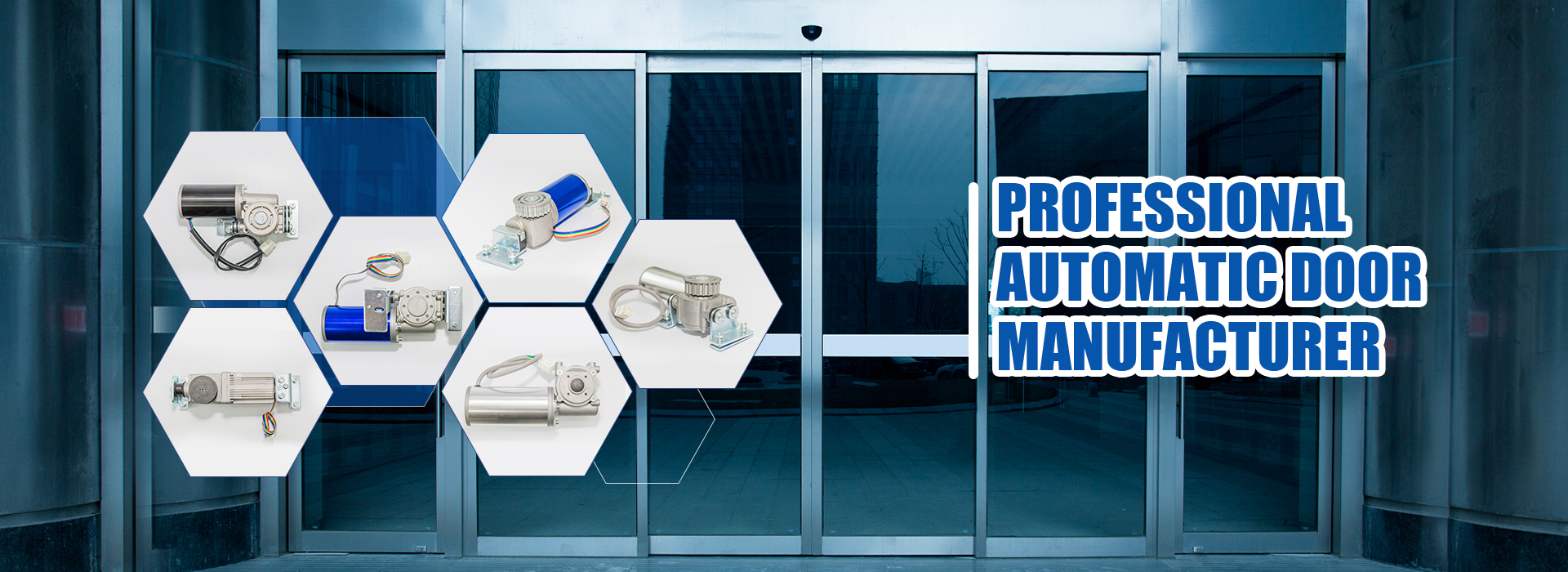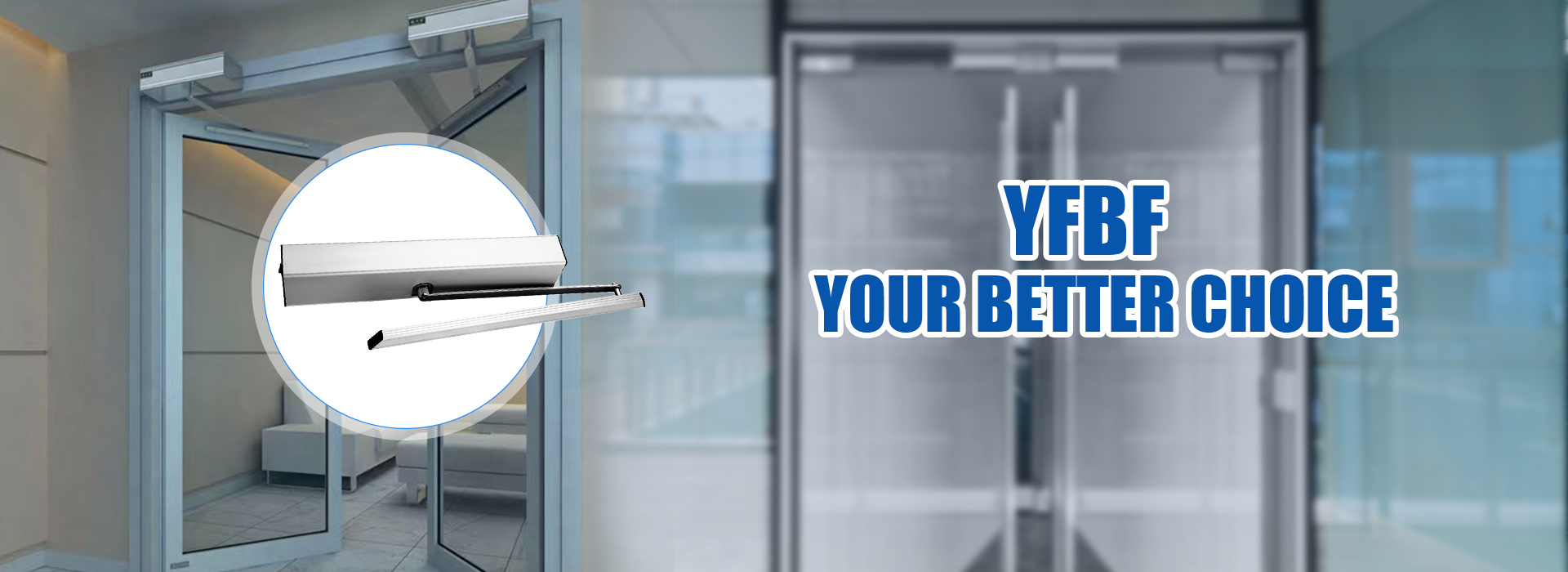
Innovation drives progress in every industry, and automatic sliding door operators are no exception. These systems now go beyond basic functionality, offering smarter and safer solutions. As technology evolves, users expect doors to adapt to their needs seamlessly. This growing demand pushes manufacturers to create more efficient, intuitive designs.
Key Takeaways
- New sensors make sliding doors safer and work better. Pick doors with microwave or infrared sensors for best results.
- Energy-saving designs, like low-power parts or solar power, cut costs. They also help the environment by using less energy.
- Biometric systems give strong security and are easy to use. Try fingerprint or face scanners for quick entry without keys.
Sensor Technology Advancements
Modern automatic sliding door operators rely heavily on advanced sensor technology to deliver seamless performance. These innovations enhance safety, efficiency, and user convenience, making them indispensable in both commercial and residential spaces.
Enhanced Motion Detection Systems
Motion detection systems have come a long way. Today’s sensors are more reliable and accurate than ever. For example:
- The ULTIMO Sensor combines microwave motion detection with three adjustable infrared curtains. This setup ensures consistent sensitivity, even in high-traffic areas.
- The IXIO-DT1 Sensor uses microwave radar for activation and infrared for safety, offering energy efficiency and pedestrian protection.
- The LZR®-H100 Sensor creates a three-dimensional detection zone using LASER technology. It can be configured for various applications, ensuring precise object detection.
These systems not only improve safety but also reduce energy consumption by activating only when needed. This makes them a perfect fit for energy-conscious users.
Infrared and Radar Safety Sensors
Safety is a top priority for any automatic sliding door operator. Infrared and radar sensors play a crucial role in preventing accidents. They detect obstacles in real time, ensuring the door doesn’t close on a person or object. Many modern systems, like the BF150 Automatic Sliding Door Operator, use these sensors to stop the door before it even comes into contact with a user. This proactive approach enhances both safety and user experience.
Additionally, these sensors are designed to work in various lighting conditions, making them reliable in both indoor and outdoor environments. Their ability to adapt to different scenarios ensures consistent performance, no matter the setting.
Adaptive Sensitivity for Diverse Environments
Not all environments are the same, and sensor technology has adapted to meet these challenges. Adaptive sensitivity mechanisms adjust to environmental changes, ensuring optimal performance. For instance:
- Sensors can modify their detection range based on foot traffic, reducing unnecessary activations in low-traffic areas.
- In high-traffic zones, they maintain a wider detection range to accommodate more users.
- These systems also perform well in extreme weather conditions, ensuring reliability regardless of temperature or humidity.
This adaptability makes automatic sliding door operators suitable for a wide range of applications, from busy airports to quiet office buildings.
Tip: When choosing an automatic sliding door operator, look for models with advanced sensor technology. They offer better safety, energy efficiency, and adaptability, ensuring long-term value.
Energy Efficiency Innovations
Energy efficiency has become a top priority for modern automatic sliding door systems. These innovations not only reduce energy consumption but also contribute to a more sustainable future.
Low-Power Mechanisms for Reduced Energy Consumption
Automatic sliding door operators now feature low-power mechanisms that minimize energy usage during operation. These systems use advanced motors and control units to optimize power consumption. For example, some models adjust their speed based on traffic flow, ensuring they only use as much energy as necessary. This approach helps businesses cut costs while maintaining smooth and reliable door movement.
Solar-Powered Sliding Door Systems
Solar-powered systems are revolutionizing the way automatic sliding doors operate. By harnessing renewable energy, these systems reduce reliance on traditional power sources. They are especially useful in areas with abundant sunlight, where they can operate almost entirely off-grid. This not only lowers electricity bills but also reduces the carbon footprint of the building. Many commercial spaces are adopting these systems to align with their sustainability goals.
Energy Recovery Systems for Sustainable Operation
Energy recovery systems take efficiency to the next level. These systems capture and reuse energy generated during door operation, such as when the door slows down or stops. The recovered energy can then power other components of the system, reducing overall consumption.
Consider the Green Pea building in Turin, which uses GEZE automatic sliding door systems. These doors significantly lower heat consumption and CO₂ emissions, making the building more eco-friendly. The benefits of such systems are clear:
- Cooling equipment savings of 1267 tonnes.
- Heating savings of 394,358 Btu/hr.
- Annual CO₂ emission reductions of 117,140 kg.
- A return on investment (ROI) within just 20 months.
| Benefit | Value |
|---|---|
| Cooling equipment savings | 1267 tonnes |
| Heating savings | 394,358 Btu/hr |
| Reduced CO2 emissions | 117,140 kg annually |
| Return on investment (ROI) | 20 months |
These advancements make automatic sliding door operators a smart choice for businesses looking to save energy and reduce costs.
Biometric Access Integration
Biometric access technology is transforming how people interact with automatic sliding door systems. By using unique human features like fingerprints and facial patterns, these systems offer a blend of convenience and security that traditional methods cannot match.
Fingerprint Recognition for Personalized Access
Fingerprint recognition systems provide a highly personalized and secure way to access sliding doors. These systems rely on unique human characteristics, ensuring that only authorized individuals can enter. Unlike keycards or passwords, fingerprints cannot be lost, stolen, or forgotten. This makes them a reliable choice for both residential and commercial spaces.
| Advantage | Description |
|---|---|
| Unique Identification | Biometric systems use intrinsic human features, making them unique to each individual. |
| Elimination of Lost Tokens | Unlike traditional methods, biometrics do not rely on physical tokens that can be lost or stolen. |
| High Security | Biometric systems provide a high level of security by ensuring that only authorized users can access the system. |
| Convenience | Users do not need to remember passwords or carry tokens, simplifying the access process. |
Facial Recognition Systems for Seamless Entry
Facial recognition technology takes convenience to the next level. These systems scan and identify users in real time, allowing doors to open automatically without any physical interaction. This hands-free approach is especially useful in high-traffic areas like airports or hospitals, where speed and efficiency are critical. The integration of facial recognition with an automatic sliding door operator ensures a seamless and futuristic experience.
Multi-Factor Authentication for Enhanced Security
For environments requiring heightened security, multi-factor authentication combines biometrics with additional verification methods. For example, a system might require both a fingerprint scan and a PIN code. This layered approach significantly reduces the risk of unauthorized access. Multi-factor authentication is ideal for sensitive areas like data centers or research facilities, where security is paramount.
Note: Biometric access systems not only enhance security but also improve user convenience, making them a valuable addition to modern sliding door technology.
Noise Reduction Technologies
Noise reduction plays a vital role in enhancing the comfort and functionality of automatic sliding door systems. Modern innovations ensure these doors operate quietly, making them suitable for environments like hospitals, offices, and homes.
Silent Motor Designs for Quiet Operation
Silent motor designs have transformed how sliding doors function. These motors use advanced engineering to minimize operational noise. For instance, top-hung systems ensure smooth and quiet movement by controlling acceleration and deceleration cycles. Independent laboratory tests and decades of field data confirm their effectiveness in reducing noise levels.
| Evidence Type | Description |
|---|---|
| Independent Laboratory Tests | Proven product with tests validating noise reduction claims. |
| Field Test Results | Real-world acoustic tests demonstrating long-term effectiveness. |
| Design Features | Top-hung systems providing smooth, quiet operation with controlled motion. |
These features make silent motors a preferred choice for noise-sensitive areas.
Advanced Sealing Mechanisms to Minimize Noise
Sealing mechanisms are another critical innovation. Hermetic sliding door systems create airtight seals that significantly reduce sound leakage. This design not only minimizes noise but also prevents air and contaminants from passing through.
- These systems are ideal for healthcare and pharmaceutical settings where sound control is crucial.
- Their ability to block noise ensures a quieter and more comfortable environment for users.
By combining superior sealing capabilities with durability, these mechanisms enhance the overall performance of sliding doors.
Acoustic Insulation Materials for Enhanced Comfort
Acoustic insulation materials further improve noise reduction. High-quality tracks, rollers, and handles ensure smooth and quiet operation. Mechanical dampers, such as hydraulic or pneumatic systems, dissipate energy to control door movement and reduce noise.
- Hydraulic dampers provide precise control and durability.
- Pneumatic dampers offer smooth, controlled motion for gentle handling.
These materials and technologies work together to create a quieter, more pleasant experience for users. Whether in a bustling office or a serene home, noise reduction technologies elevate the functionality of sliding doors.
IoT and Smart Connectivity

The Internet of Things (IoT) is reshaping how automatic sliding door systems operate. By connecting these doors to smart networks, users gain more control, convenience, and efficiency. Let’s explore how IoT is transforming sliding door technology.
Remote Monitoring and Control via IoT
IoT-enabled sliding door systems allow users to monitor and control their doors from anywhere. With a smartphone app, they can check the door’s status, open or close it remotely, and even receive alerts if something unusual happens. This level of control is especially useful for businesses managing multiple entry points or homeowners who want peace of mind while away.
For example, a facility manager can use an app to ensure all doors are locked after hours. Similarly, a homeowner can let in a delivery person without being physically present. These features not only enhance security but also save time and effort. IoT connectivity makes managing an automatic sliding door operator as simple as tapping a screen.
Tip: Look for systems that offer real-time notifications. They can alert you to potential issues, ensuring quick action when needed.
Integration with Smart Home Systems for Convenience
Smart home integration takes sliding door technology to the next level. By connecting to systems like Amazon Alexa, Google Home, or Apple HomeKit, users can control their doors with voice commands or automation routines. Imagine saying, “Alexa, lock the front door,” and watching it happen instantly.
This integration also improves energy efficiency. Sliding doors can work with smart thermostats to optimize insulation, reducing heating and cooling costs. For instance, the door can automatically close when the air conditioner is running, preventing energy loss.
| Feature | Description |
|---|---|
| Remote Control | Users can operate and monitor doors remotely via smartphone apps, enhancing convenience. |
| Energy Efficiency | Sliding door operators optimize insulation, reducing energy consumption, crucial for modern buildings. |
| Integration with Smart Tech | Incorporates AI and IoT for seamless control and enhanced safety, appealing to consumers. |
Additionally, these systems often include advanced features like motion sensors and biometric recognition. These technologies improve security while making daily interactions smoother. Whether it’s a busy office or a smart home, integrating sliding doors with smart systems creates a seamless experience.
- Smart sliding door openers allow remote operation, providing convenience and real-time access control.
- Integration with building automation systems enhances energy efficiency and overall management.
- Features like motion sensors and biometric recognition improve security and user experience.
Predictive Maintenance Using IoT Sensors
IoT sensors are revolutionizing maintenance for sliding door systems. These sensors continuously monitor the door’s performance, detecting issues before they become major problems. For example, they can identify unusual vibrations, motor strain, or sensor malfunctions. Once detected, the system can notify the user or service provider, enabling timely repairs.
Predictive maintenance reduces downtime and extends the lifespan of the door system. Businesses benefit from fewer disruptions, while homeowners avoid unexpected repair costs. This proactive approach ensures that an automatic sliding door operator remains reliable and efficient over time.
Note: Predictive maintenance not only saves money but also enhances safety by addressing potential issues early.
IoT and smart connectivity are transforming sliding door technology. From remote control to predictive maintenance, these advancements make sliding doors smarter, safer, and more convenient than ever.
Product Spotlight: BF150 Automatic Sliding Door Operator
Features of the BF150 Slim Motor
The BF150 Automatic Sliding Door Operator stands out with its slim motor design, which maximizes both functionality and space. This compact motor ensures full door opening, making it ideal for areas requiring wide access. Whether it’s a bustling commercial space or a cozy residential setting, the BF150 adapts seamlessly.
Its technical capabilities further enhance its appeal. The motor operates efficiently across a wide temperature range, from -20°C to 70°C, making it suitable for diverse climates. The integrated sensor system combines light beam, infrared, and radar technologies to detect obstacles reliably. Users can also customize the opening and closing speeds, optimizing energy consumption based on their needs.
| Feature | Description |
|---|---|
| Slim Motor Design | Ensures full door opening, maximizing space and ease of access. |
| Operating Temperature Range | Functions effectively in temperatures from -20°C to 70°C, suitable for various climates. |
| Sensor Technology | Utilizes light beam, infrared, and radar sensors for reliable obstacle detection. |
| Customizable Settings | Allows adjustment of opening and closing speeds to optimize energy use. |
Benefits of Full Door Opening Capability
The BF150’s ability to fully open doors offers unmatched convenience. This feature is particularly beneficial in high-traffic areas like malls, airports, and hospitals, where smooth and unobstructed access is crucial. It also enhances accessibility for individuals with mobility challenges, ensuring everyone can move freely.
By maximizing the opening width, the BF150 eliminates bottlenecks and improves the flow of people and goods. This makes it a practical choice for businesses aiming to enhance customer experience or streamline operations. The slim motor design complements this functionality, ensuring the operator remains compact without compromising performance.
Safety Mechanisms to Prevent User Contact
Safety is a cornerstone of the BF150 Automatic Sliding Door Operator. Its advanced sensor system prevents the door from coming into contact with users. Infrared and radar sensors detect obstacles in real time, stopping the door before any accidental contact occurs.
The operator also includes a light beam sensor across the opening. If an object interrupts the beam, the door immediately halts its movement. This proactive approach ensures user safety while maintaining smooth operation. These mechanisms make the BF150 a reliable choice for environments where safety is paramount, such as healthcare facilities and schools.
Tip: The BF150’s safety features not only protect users but also reduce wear and tear on the system, extending its lifespan.
Emerging technologies are reshaping automatic sliding doors. From energy efficiency to IoT connectivity, these advancements deliver smarter, safer, and more sustainable solutions. Their impact is undeniable:
| Evidence Type | Statistic/Impact |
|---|---|
| Energy Efficiency | 30% reduction in energy costs due to optimal sealing features |
| Rental Rates | 20% increase in rental rates for buildings with advanced entry solutions |
| Market Growth | Projected annual growth rate of over 10% for magnetic levitation systems |
Adopting these innovations ensures businesses stay ahead in a rapidly evolving market.
Contact Edison for more insights:
Post time: May-22-2025
- English
- French
- German
- Portuguese
- Spanish
- Russian
- Japanese
- Korean
- Arabic
- Irish
- Greek
- Turkish
- Italian
- Danish
- Romanian
- Indonesian
- Czech
- Afrikaans
- Swedish
- Polish
- Basque
- Catalan
- Esperanto
- Hindi
- Lao
- Albanian
- Amharic
- Armenian
- Azerbaijani
- Belarusian
- Bengali
- Bosnian
- Bulgarian
- Cebuano
- Chichewa
- Corsican
- Croatian
- Dutch
- Estonian
- Filipino
- Finnish
- Frisian
- Galician
- Georgian
- Gujarati
- Haitian
- Hausa
- Hawaiian
- Hebrew
- Hmong
- Hungarian
- Icelandic
- Igbo
- Javanese
- Kannada
- Kazakh
- Khmer
- Kurdish
- Kyrgyz
- Latin
- Latvian
- Lithuanian
- Luxembou..
- Macedonian
- Malagasy
- Malay
- Malayalam
- Maltese
- Maori
- Marathi
- Mongolian
- Burmese
- Nepali
- Norwegian
- Pashto
- Persian
- Punjabi
- Serbian
- Sesotho
- Sinhala
- Slovak
- Slovenian
- Somali
- Samoan
- Scots Gaelic
- Shona
- Sindhi
- Sundanese
- Swahili
- Tajik
- Tamil
- Telugu
- Thai
- Ukrainian
- Urdu
- Uzbek
- Vietnamese
- Welsh
- Xhosa
- Yiddish
- Yoruba
- Zulu
- Kinyarwanda
- Tatar
- Oriya
- Turkmen
- Uyghur



